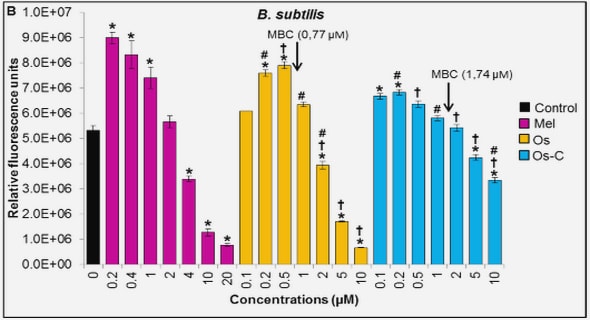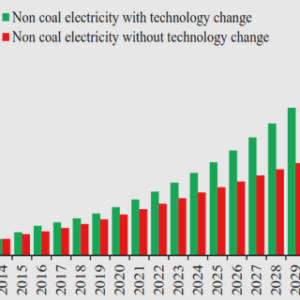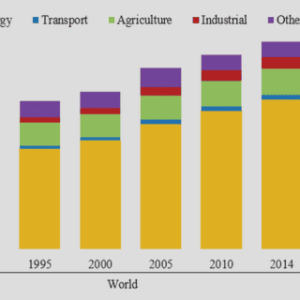(Downloads - 0)
For more info about our services contact : help@bestpfe.com
Table of contents
CHAPTER I : Applications of Ultrasound in Processing, Preservation and Extraction
1.1. INTRODUCTION
1.2. ULTRASOUND PRINCIPLE
1.3. INFLUENCING PARAMETERS
1.3.1. Solvent type
1.3.2. Temperature
1.3.3. Ultrasonic intensity
1.3.4. Ultrasonic power and frequency
1.3.5. Presence of dissolved gases
1.4. INSTRUMENTATION
1.4.1. Laboratory scale
1.4.2. Industrial scale
1.5. ULTRASOUND IN FOOD PROCESSING
1.5.1. Filtration
1.5.2. Defoaming
1.5.3. Filtration, Degassing/Deaeration
1.5.4. Cooking
1.5.5. Cutting
1.5.6. Freezind and Crystallization
1.5.7. Drying
1.5.8. Sterilization/ Pasteurization
1.5.9. Emulsification/Homogenization
1.5.10. Miscellaneous Effects
1.6. ULTRASOUND IN FOOD PRESERVATION
1.6.1. Microorganism inactivation
1.6.2. Spore inactivation
1.6.3. Enzyme inactivation
1.7. ULTRASOUND IN FOOD EXTRACTION
1.7.1. Fruits and vegetables
1.7.2. Herbs and spices
1.7.3. Oleaginous seeds
1.8. CONCLUSION
CHAPTER II : Ultrasound in The Extraction of Polyphenols From Apple Pomace
1.1. INTRODUCTION
1.2. EXPERIMENTAL SECTION
1.2.1. Plant material and chemicals
1.2.2. Extraction Procedures
1.2.3. Isolated compounds study
1.2.4. Total phenolics determination (TPC)
1.2.5. Identification of phenolic compounds by HPLC-DAD
1.2.6. Antioxidant activity: inhibition of linoleic acid peroxidation
1.2.7. Experimental design
1.2.8. Kinetics studies
1.3. RESULTS AND DISCUSSION
1.3.1. Solid-liquid ratio
1.3.2. Experimental design studies
1.3.3. Results for TPC
1.3.4. Optimization of ultrasound-assisted extraction
1.3.5. Comparison and kinetic studies
1.3.6. Antioxidant Activity
1.3.7. Ultrasound effects on extracted molecules
1.3.8. Large scale ultrasound extraction
1.4. CONCLUSION
CHAPTER III : Ultrasound In Food Preparation
3.1. INTRODUCTION
3.2. EXPERIMENTAL SECTION
3.2.1. Materials and equipments
3.2.2. Food preparation
3.2.3. Analysis Methodology
3.3. RESULTS AND DISCUSSION
3.3.1. Chocolate Genoise
3.3.2. Sponge cake
3.3.3. Chocolate mousse
3.4. CONCLUSIONS
CHAPTER I : Ultrasound Effects on Food Products
1.1. INTRODUCTION
1.2. IMPACT OF ULTRASOUND ON FOOD PRODUCTS
1.2.1. Color modifications
1.2.2. Antioxidants modifications
1.2.3. Polysacharides modifications
1.3. IMPACT OF ULTRASOUND ON LIPID CONTAINING FOOD PRODUCTS
1.3.1. Emulsification/crystallization
1.3.2. Homogenization
1.3.3. Cutting
1.3.4. Extraction
1.3.5. Microbial Inactivation
1.4. MECHANISMS AND FACTORS OF LIPID OXIDATION
1.4.1. Initiation
1.4.2. Propagation
1.4.3. Termination
1.5. LIPID DEGRADATION ASSESSMENT METHODS
1.5.1. Primary oxidation compounds
1.5.2. Secondary oxidation compounds
1.5.3. Other methods
1.6. CONCLUSION
CHAPTER II : Degradation of Edible Oils During Ultrasound Processing
2.1. INTRODUCTION
2.2. MATERIALS AND METHODS
2.2.1. Materials and Reagents
2.2.2. Ultrasound treatment of samples
2.2.3. Physicochemical analysis
2.2.4. Electron paramagnetic resonance analysis
2.2.5. Fatty acid methyl esters derivatives analysis
2.2.6. Volatiles and off-flavors analysis
2.2.7. Sensory analysis
2.2.8. Statistical analysis
2.3. RESULTS AND DISCUSSION
2.3.1. Physicochemical analysis
2.3.2. Electron paramagnetic resonance analysis
2.3.3. Volatiles, sensory and off-flavors analysis
2.3.4. Generalization
2.3.5. Comprehension of the mechanism of ultrasound lipid degradation
2.4. CONCLUSION
REFERENCES




